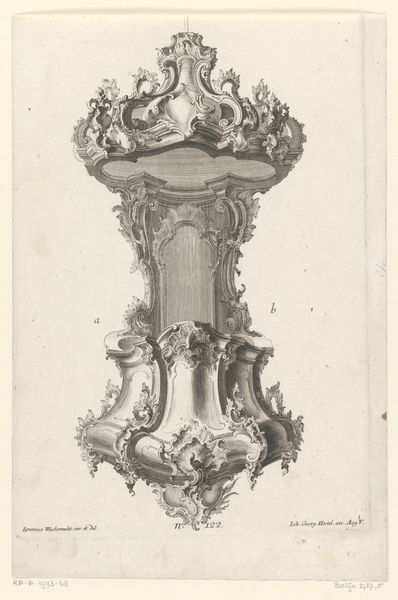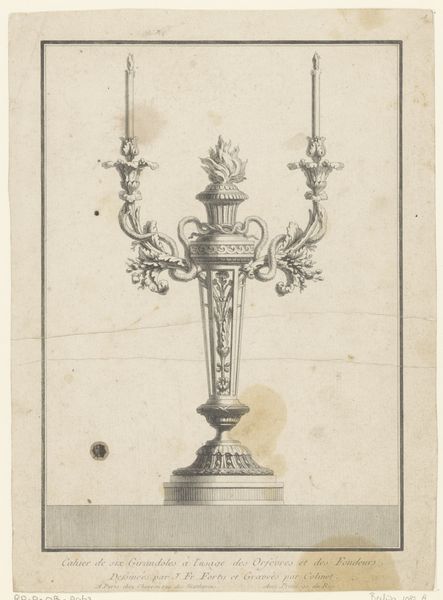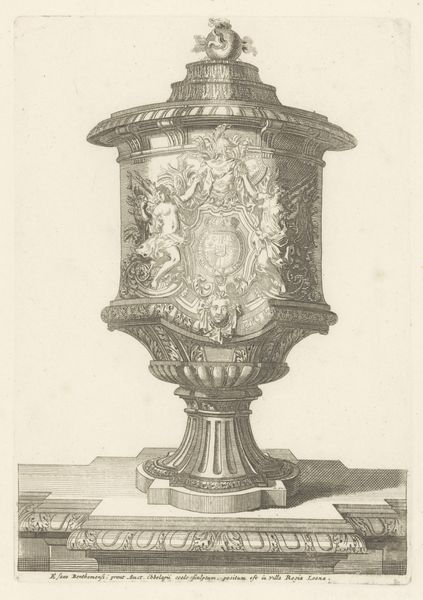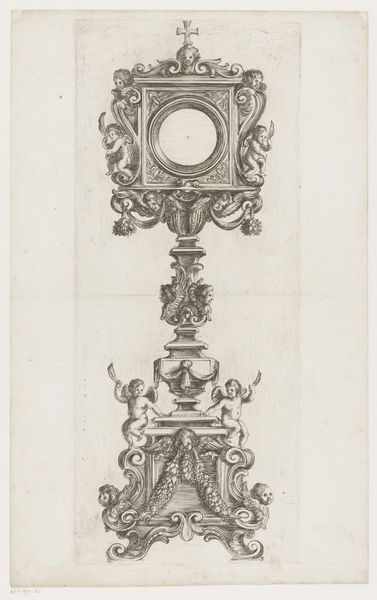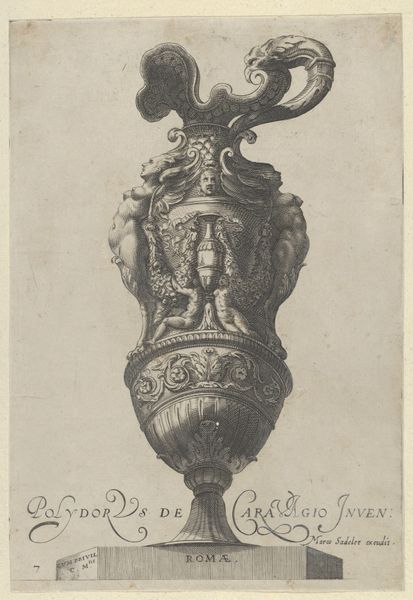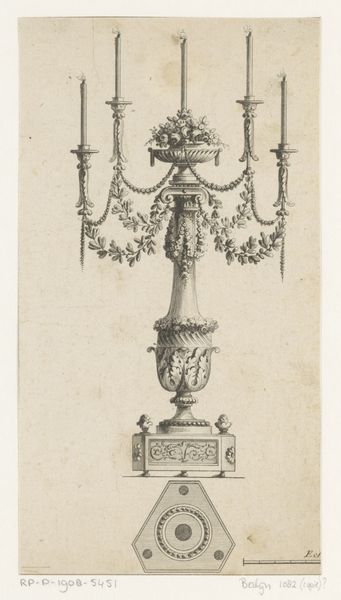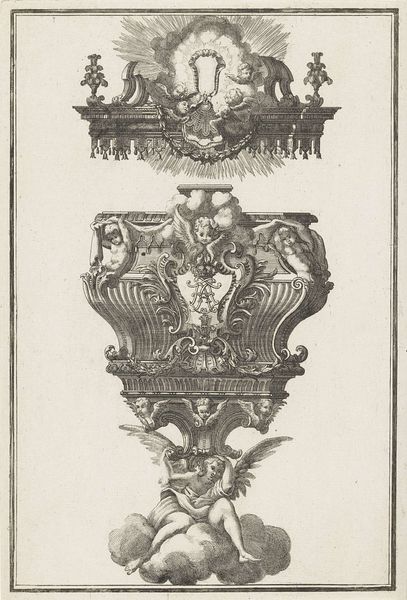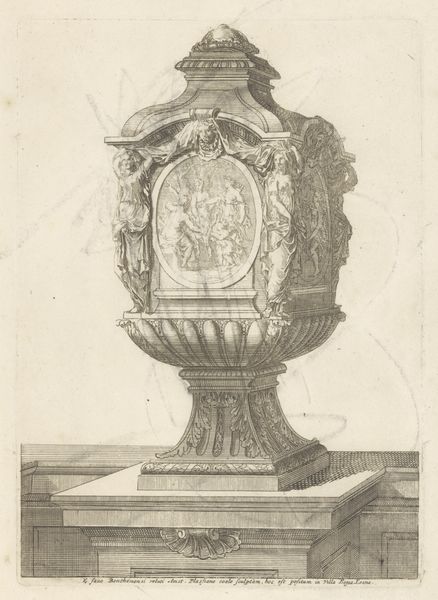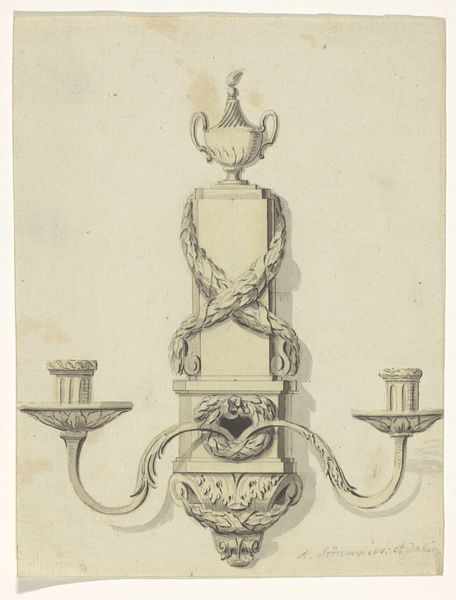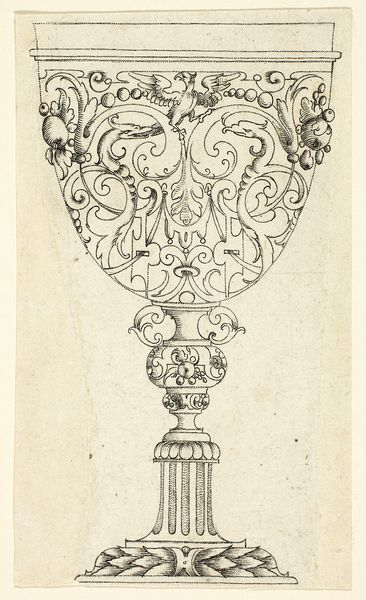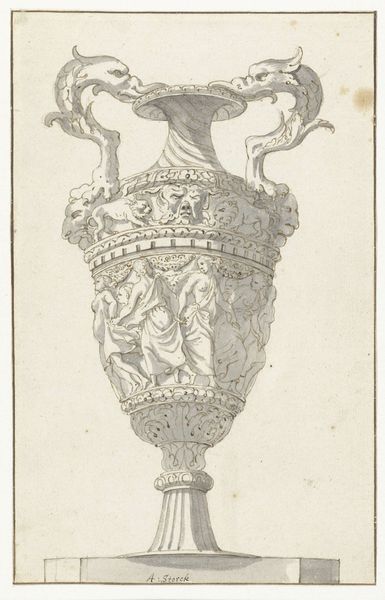
engraving
#
baroque
#
old engraving style
#
form
#
line
#
history-painting
#
decorative-art
#
engraving
Dimensions: height 322 mm, width 199 mm
Copyright: Rijks Museum: Open Domain
Editor: This is "Preekstoel met alziend oog," or "Pulpit with the All-Seeing Eye," an engraving by Emanuel Eichel, dating from around 1727 to 1771. The detail is incredible! All the swirling lines give a real sense of dynamism. What catches your eye? Curator: Immediately, the density and variation of line, its sheer graphic exuberance. Observe how the artist utilizes hatching and cross-hatching to suggest volume and shadow. Do you note the implied three-dimensionality despite the two-dimensional medium? Editor: Absolutely, the contrast makes it seem like it’s popping off the page. The form itself, all those curves... it's almost overwhelming. Is there a specific term for this kind of ornamentation? Curator: One might classify this as a demonstration of Baroque sensibilities, showcasing asymmetry and elaborate detail to create a sense of awe. The lack of color also helps isolate and enhance appreciation for the formal qualities. Editor: It really does. Thinking about form, what is the significance of the All-Seeing Eye? Does that disrupt the pure formalism here? Curator: Intriguingly, its presence injects an element of narrative, but consider its function *within* the composition. Is it not simply another shape, another formal element contributing to the overall visual texture? Editor: I guess so. I hadn't thought about it like that! Thanks for showing me how to focus on the engraving's pure design. Curator: Indeed. Paying close attention to the interplay of form and line allows one to discover profound qualities, irrespective of historical context.
Comments
No comments
Be the first to comment and join the conversation on the ultimate creative platform.

